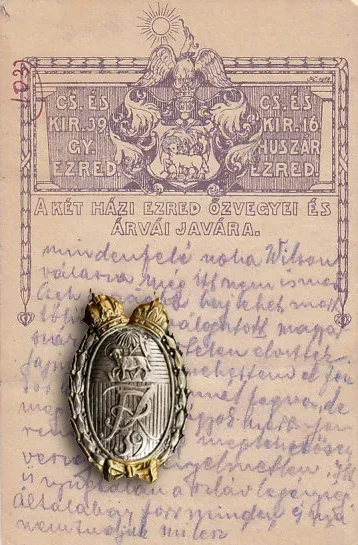Debrecen IR 39
The infantry regiment of the city of Debrecen was the 39th regiment founded in 1756. The history of this troop was also rich in events, and perhaps the most interesting thing for Hungarian readers was that it fought on the Hungarian side in the War of Independence in 1848-49. It was one of the regiments of the 17th Division in the Great War. Their most memorable military operations were carried out in defense of the Karst Plateau. Here, along with the entire division, they fought in the 2-12 Isonzo battles from the summer of 1915 until October 1917. Perhaps there was no other unit that served so much time continuously on such a horrible battlefield (along with the fellow 46th, 61st, and 43rd regiments of the division).

But the post is now primarily about the city and its coat of arms. The coat of arms originated in the early 1600s. Debrecen was already a famous Protestant religious center at that time, the Calvinist Rome. The coat of arms reflects this status, as the pictorial representation of the shield is full of biblical symbols. The central figure is the lamb holding a flag, the person of Jesus Christ. He stands on the two volumes of Scripture, the books of the Old and New Testaments. Above it is the palm tree, a symbol of durability and endurance. The phoenix rising from the fire in the upper part of the helmet that closes the coat of arms symbolizes the way the city of Debrecen has always revived in the midst of vomiting.

The beautiful badge of the regiment depicts the central part of the coat of arms. The attached postcard commemorates the heroes of the regiment and the 16th Hussar Regiment, which is also connected to the city. As the post belongs to the series of walking tours in the Monarchy, I also upload today’s depiction of the coat of arms. It decorates one of the city hall in Debrecen.




